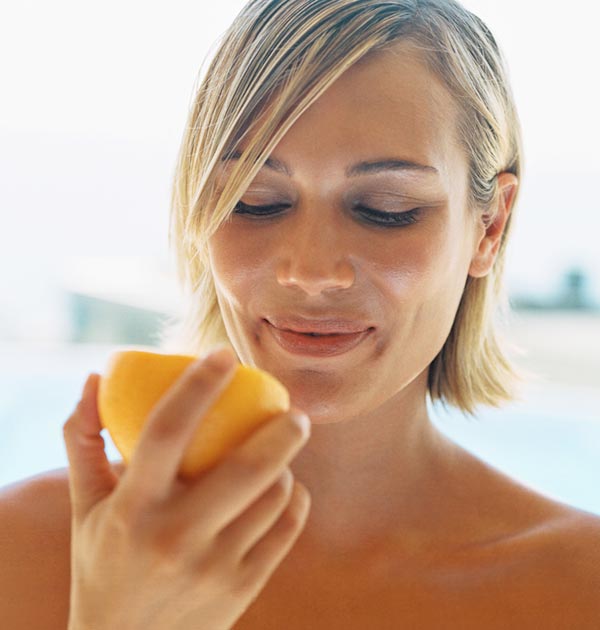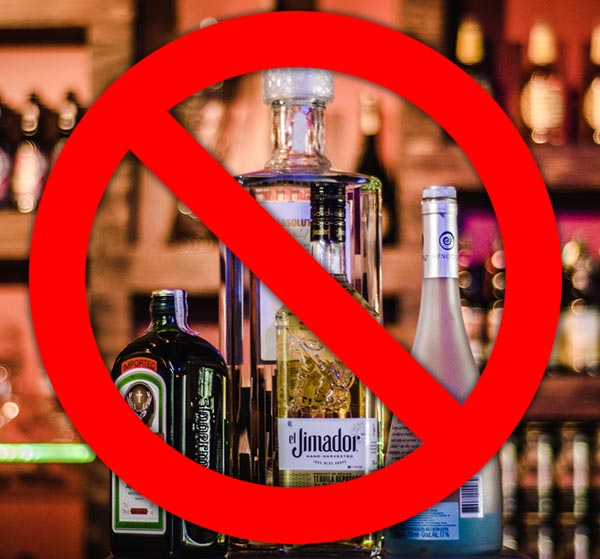HPV Human Papillomavirus STD Treatment, Symptoms & Causes
How To Treat HPV Naturally

How to Treat HPV Naturally
The most common sexually transmitted infection in the United States is genital Human Papillomavirus (HPV). Though mostly a transient viral infection, this extremely common and easily transmitted virus can lead to genital warts, abnormal pap smears, precancerous changes in the cervix, and possibly cervical cancer.
According to the CDC, it is estimated that nearly 100% of sexually active men and women will acquire HPV at some point in their lives and current estimates suggest that nearly 80 million people in the US have HPV (1). Given the staggering number of people who will be affected by HPV, it is important to know how to identify HPV symptoms, understand common risk factors for getting infected and current options for treating HPV both conventionally and naturally.
According to the CDC, it is estimated that nearly 100% of sexually active men and women will acquire HPV at some point in their lives…
%
Common HPV Symptoms
HPV refers to a group of very common and highly infectious viruses that can be transmitted during sexual activity and skin to skin contact. The World Health Organization estimates that there are over 100 types of HPV strains, the majority of which do not lead to cancer. Thirteen sub-types are considered “high-risk” for causing precancerous and cancerous changes of the cervix, anus, vulva, vagina, penis (2).
Approximately 70% of cervical cancers and pre-cancerous cervical changes (known as dysplasia) are caused by two HPV types, 16 and 18. Ninety percent of genital warts are caused by types 6 and 11 (2). It is important to know that most women infected with high-risk HPV types have normal Pap test results and never develop abnormal cervical cell changes or cervical cancer (1).
Most people don’t know they have Human Papillomavirus, and luckily most HPV-related symptoms often clear up on their own.
Human Papillomavirus Symptoms
Most people don’t know they have Human Papillomavirus, and luckily most HPV-related symptoms often clear up on their own. Depending on which HPV strain is present and the area of the body affected, individuals may develop some of the following symptoms:
- Genital warts — a raised “cauliflower” like benign growth that can appear on the vulva, inside the vagina, around the anal area and in the cervix. In men, genital warts are typically found on the penis or scrotum or around the anus
(3). Other warts (plantar, flat and oral warts) can appear on other areas of the body. - Benign growths in the throat and respiratory tract
- Less commonly, cancer and pre-cancer of the anus, skin of the penis, skin on the scrotal area.
- Cervical cancer which can present with the following symptoms
(3):
» Irregular bleeding between periods or abnormal vaginal bleeding after sexual intercourse;
» back, leg or pelvic pain;
» fatigue, weight loss, loss of appetite
» vaginal discomfort or odorous discharge; and
» a single swollen leg.
How do you get HPV?
Human Papillomavirus risk factors for women
HPV is primarily spread through sexual intercourse (vaginal, anal and oral) and skin to skin contact, therefore, sex is not necessary to become infected. In some cases, active HPV infections may be passed down from mom to baby during vaginal birth, however this typically does not impact the baby’s health as it is a transient infection (5).
Risk factors more strongly associated with genital HPV infection in women include: (2)
- Risk increases with increasing number of recent and lifetime sex partners
- Early age of first sexual intercourse
- Sexual behavior of sex partners — risk increases for women whose sex partners have had multiple sex partners
- Immune status — HPV is more likely to be detected in immunosuppressed women (e.g., HIV-infected persons, women on dialysis, and after kidney transplant)
Risk factors more weakly associated with genital HPV infection in women include: (2)
- Smoking
- Oral contraceptives
- Poor nutrition
- Uncircumcised men
Can you treat HPV?
The good news is that the natural history of HPV infection is benign — they tend to be temporary infections, without clinical symptoms and will not lead to severe disease. In fact, 70% of new infections will spontaneously clear within one year and 90% will clear within 2 years (6). It is thought that developing an effective immune response to the virus leads to HPV DNA clearance.
The time from infection to development of symptoms in those individuals who will experience HPV-related signs and symptoms is the following (6):
- Genital warts: weeks to months
- Cervical cell precancerous changes: months to years
- Cervical cancers: decades
%
70% of new infections will spontaneously clear within one year
%
90% of new infections will clear within 2 years
How to treat HPV:
Most women are familiar with Pap test screening performed during most annual gynecologic exams: a swab of the cervix is used to check for abnormal changes in the cells of the cervix. HPV viral DNA testing is often automatically included for women over the age of 30 and under 65. If the Pap test is abnormal, then a colposcopy test is performed to determine if the changes detected on the pap are severe enough to warrant treatment to prevent the progression to cervical cancer.
There is no conventional treatment recommended for subclinical HPV infection. Unless you have warts, precancerous changes of the cervix or cervical cancer, the recommendation is to watch and wait. If you DO have HPV-related disease (not just evidence of carrying the virus) treatment may include antiviral drugs, topical medications or surgery.
Genital Warts may be treated by patient-applied, topical formulations with immune modulating properties:
- Podofilox .5%, applied once a day, three days on, four days off for one month
- Imiquimod 5% applied once a day, three times per week for 16 weeks
- Sinecatechins 15% applied three times a day for 16 weeks
Genital Warts may be treated by your gynecologist with the following formulations:
- Podophylox 10-25% (higher concentration) applied weekly in a benzoin base. Caution regarding systemic toxicity is advised.
- TCA (trichloroacetic acid) 80-90% concentration with weekly applications until warts resolve Cryotherapy with liquid nitrogen — applied every 2 weeks until warts resolve (advised for larger areas of involvement)
- Cryotherapy with liquid nitrogen — applied every 2 weeks until warts resolve (advised for larger areas of involvement)
- CO2 Laser ablation — local destruction of warts present in large areas
- Surgical excision with traditional or electrocautery methods, to treat large areas of involvement.
Cervical Dysplasia (precancerous changes of the cervix):
- Low Grade Dysplasia: in general, low-grade changes of the cervix often resolve on their own. Persistent low grade disease can be observed with frequent and proper follow-up or can be treated with cryotherapy or local excision
- High Grade Dysplasia: the risks of these cervical cell changes progressing to full blown cervical cancer are less than 1-2% within 24 months with approximately 50% regressing to less severe dysplasia
(7). Most physicians recommend intervention to prevent possible progression to cancer. Treatments include a LEEP procedure (Loop electrocautery excision procedure) or a cone biopsy (a cone-shaped excision) to remove the affected area.
Cervical Cancer treatments are beyond the scope of this article, however they involve more invasive surgery and potentially radiation or chemotherapy.
Research on natural alternatives for HPV treatment:
There have been several studies conducted to support the potential benefits of vitamins and natural supplements in clearing HPV infection and healing precancerous changes of the cervix.
- Curcumin — In order for HPV to cause cancer in the cervix, certain cancer-promoting genes must be expressed. Studies have shown that curcumin can actually inhibit these genes to prevent tumor progression
(8). A Phase II clinical trial using a combination curcumin herbal preparation in a topical vaginal cream showed higher clearance of HPV compared to placebo(9). - AHCC — a Japanese mushroom extract known to improve innate immune system function, was effective at eradicating HPV in a small pilot study conducted at the University of Texas Health Science Center at Houston Medical School. Ten HPV positive women were treated orally with the extract (AHCC — active hexose correlated compound) once daily for six months, with five showing a negative HPV test
(10). Preclinical studies have shown that AHCC increases the number of natural killer cells that help the body fight off infections. - Selenium and regression of cervical dysplasia — a randomized, double-blind, placebo-controlled trial carried out among 58 women with CIN 1 (low grade cervical dysplasia) published in the British Journal of Clinical Nutrition concluded that 200 mcg of selenium supplementation for 6 months resulted in an 88% rate of regression compared to 56% in the placebo arm
(11). The study also showed that selenium supplementation improved metabolic markers of insulin sensitivity, which may be associated with improved immune system function. - Vitamins A, C and E — a study published in the International Journal of Gynecologic cancer in April 2010 concluded that patients who routinely took multivitamins that included vitamins A, C and E had a reduced risk of developing CIN 1 (low grade dysplasia) and CIN II/III (high grade dysplasia)
(12). In addition, a large systematic review published in the February 2007 issue of JAMA (Journal of the American Medical Association) evaluating 68 randomized trials involving over 232,000 participants concluded that vitamins A and E improved disease outcomes. Epidemiologic studies support the immune boosting benefits of vitamin C on cervical health(13). - B complex vitamins (B12 and folate) — A study published in the Cancer Prevention Research journal concluded that women with adequate folate and B12 levels were 70% less likely to be diagnosed with more severe cervical dysplasia compared to women with decreased levels of those vitamins
(14). In a separate analysis published in the same journal, women with healthier dietary patterns were 3 times less likely to develop moderate to severe cervical dysplasia compared to women with poor dietary patterns(15). A study conducted on 724 women who participated in a cervical cancer screening indicate supplementation of folate and vitamin B12 are beneficial to prevent cervical cancer caused by high-risk HPV according to a study published in the International Journal of Women’s Health(24). - DIM (Diindolylmethane) and I3C (Indole 3 carbinol) — both compounds can arrest growth in cervical cancer cells in vitro. A 2015 clinical trial involving 78 women with biopsy proven CIN I and II, were randomized to receive 100mg of DIM/day, 200mg/day or placebo. The treatment arms showed significant regression of disease compared to placebo after 90 to 180 days of treatment
(16). Another study however, did not show that DIM performed better than placebo in improving regression in patients with CIN III (severe high grade dysplasia) (17). Oregon State University published a study which found 50% of women who took 200 mg or 400 mg of I3C daily had complete regression of CIN-2 / CIN-3 after 12 weeks(23). - Vitamin D — A 2011 study examining the effect of long term supplementation of Vitamin D on the regression of cervical dysplasia showed that women who received 50,000 IU of vitamin D every two weeks over a six month study period showed an 84% regression rate compared to 53% in the placebo group
(18). This suggests that oral supplementation with vitamin D may be a helpful support for immune system function in women with cervical dysplasia. - Green Tea extract — One study reported improved clearance of inflammation of the cervix and both low grade and high grade cervical lesions with either oral or topical green tea extract of 200mg a day compared to placebo
(19). Green tea ointment has also been used as a successful treatment for genital warts(20). - Beta-glucan, considered a natural immunomodulator, is a soluble fiber naturally found in the cell walls of yeast, bacteria and plants (such as barley and oats). One study conducted on 60 women demonstrated beta-glucan was an effective treatment for women with HPV-related cervical disease with a 15% – 20% increase in regression rates after 12 months treatment
(25). - Antioxidant consumption — Frequent consumption of fruits high in antioxidant nutrients can reduce the risk of cervical dysplasia among women, according to a case-control study on 265 HPV-positive women published in the Gynecologic Oncology Journal
(26).
How To Treat HPV Naturally
The following recommendations are designed to help your immune system clear and defend against persistent HPV infection. As discussed in this article, most HPV infections will clear on their own. However, once HPV infection persists, you may be at risk for developing some of the clinical symptoms and diseases discussed. Helping your immune system to limit the effect of the virus and repair cell damage can protect you from developing more serious disease.
#1 Use Food As Medicine
Consume immune boosting foods with plenty of vitamins and antioxidants known for their ability to fight off viruses.
- Get your Vitamin C: include citrus, colorful bell peppers and strawberries or supplement with 1000 to 2000 mg of vitamin C a day
- Consider probiotics: supporting your microbiome is critical to having a healthy immune system. Make sure to nourish you gut flora by including fermented vegetables like kimchi and sauerkraut as well as yogurt and kefir with live cultures
(21). If you decide to use a probiotic supplement, be sure to look for a specific strain known as Lactobacillus rhamnosus, as one study suggests that long term supplementation (> 6 months) with this particular strain showed higher clearance rate of HPV related cervical abnormalities(22). - Eat plenty of fruits and vegetables: to enhance your antioxidant status. Studies show that individuals with higher fruit and vegetable intake have a reduced risk of developing precancerous changes of the cervix.
- Include selenium containing foods such as Brazil nuts, grass-fed beef, sardines and halibut top the list of this immune boosting mineral. If you wish to supplement consider taking between 200 and 400 mcgs of selenium a day.
- Cruciferous vegetables, such as broccoli, kale, cabbage and brussel sprouts top the list of cancer fighting, antioxidant packed foods. A DIM supplement or indole-3 carbinol (I3C) may be taken under supervision at a dose of 150 to 200mg a day.
#2 Take Steps To Improve Your Immunity
- Get 8 hours of sleep a night: There is a lot of evidence to suggest that maintaining optimum sleep wake cycles positively impacts immune system function
(27). Sleep interruption increases chronic low grade inflammation which can be a precursor to turning on cancer causing gene expression. - Stop (or don’t start) smoking: Smoking has been shown to increase the likelihood of developing severe cervical dysplasia in patients infected with high risk HPV subtypes
(28). - Limit Alcohol consumption: studies show that alcohol intake can reduce immune system function and is associated with an increased risk of developing cancer
(29,30). - Topical oils can useful for getting rid of warts when applied directly to the affected area as they have strong anti-viral properties:
» Oregano oil
» Pau d’arco in liquid extract form
» Tea Tree Oil
» Thuja oil
» Garlic, when applied directly
#3 Other Lifestyle Considerations
- Avoid oral contraceptive use: studies indicate that oral contraceptive users have a higher risk of developing pre-cancerous changes on the cervix compared to non-users
(31). If possible consider the use of barrier methods of contraception (diaghragm or condoms) or non-hormonal IUD’s such as Paragard. - Reduce your stress levels: Researchers at Fox Chase Cancer Center in Philadelphia studied how stress affects the body’s ability to fight off HPV infection. “HPV infection alone is not sufficient to cause cervical cancer,” explained lead author Carolyn Y. Fang. “An effective immune response against HPV can lead to viral clearance and resolution of HPV infection. But some women are less able to mount an effective immune response to HPV.” According to the study published in Annals of Behavioral Medicine, women who perceived their daily lives to be stressful were more likely to have an impaired immune response to HPV. “That means women who report feeling more stressed could be at greater risk of developing cervical cancer, because their immune system can’t fight off one of the most common viruses that cause it,” said Dr. Fang
(33). - Use condoms to reduce the risk of contracting HPV infection. Studies confirm that HPV infection risk increases with decreasing use of condoms
(34). - Sun-exposure to increase natural vitamin D: 15 to 30 minutes of sun exposure a day can supply up to 4,000 IU of vitamin D. Remember that sunblock will prevent adequate vitamin D production.
#4 Supplements To Suppress HPV Infection
Consider basic supplementation to help clear the infection and reduce the chance of developing precancerous or cancerous changes of the cervix. Check with your healthcare provider prior to initiating treatment.
- Take a B complex vitamin with adequate folate (400 mcg) and B12 (800 to 1000 mcg) daily
- Take a multivitamin with plenty of vitamin A, C, and E
- Check your vitamin D levels. If you have low normal or below normal vitamin D levels, make sure to take between 2000 and 5000 IU of vitamin D daily until normal serum levels are reached.
- Though data is limited, consider using one or more of the following supplements to help eliminate HPV-related infections and disease:
» Curcumin 1 gram daily
» DIM or I3C 200 mg daily
» Green Tea Extract 200 mg daily - Add selenium 200 mcg daily (or 3 brazil nuts a day)
- AHCC 3 grams daily was used in the study that showed regression of cervical abnormalities over a 6 month period of time.






Final HPV Treatment Thoughts:
The majority of HPV related diseases are self-limited, will spontaneously disappear and are of no cause for concern.
Once you have clinical concerns, you may wish to follow the 4 step program outlined above to improve your chances of clearing the infection and repairing any HPV related diseases.
There are many conventional and natural therapies available to you. Discuss these additional strategies with your provider to help support your body’s ability to heal itself.
As expected, many lifestyle considerations can influence the risk of developing HPV related diseases. Eating right, sleeping enough, reducing stress and supporting your body with the right supplements will go a long way toward bringing you back to health.
References:
- HPV Vaccine Safety and Effectiveness Data
- http://www.who.int/mediacentre/factsheets/fs380/en/
- https://www.mayoclinic.org/diseases-conditions/hpv-infection/symptoms-causes/syc-20351596
- https://my.clevelandclinic.org/health/diseases/15010-oral-human-papilloma-virus-hpv-infection
- https://www.ncbi.nlm.nih.gov/pubmed/9464728
- https://www.ncbi.nlm.nih.gov/pubmed/24260180
- https://www.ncbi.nlm.nih.gov/pmc/articles/PMC3132609/
- Maher DM, Bell MC, O’Donnell EA, Gupta BK, Jaggi M, Chauhan SC. Curcumin suppresses human papillomavirus oncoproteins, restores p53, Rb, and PTPN13 proteins and inhibits benzo [a] pyrene induced up regulation of HPV E7. Mol. Carcinog. 50, 47–57 (2011).
- https://www.ncbi.nlm.nih.gov/pubmed/24289574
- https://clinicaltrials.gov/ct2/show/NCT02405533
- https://www.ncbi.nlm.nih.gov/pubmed/26439877
- https://journals.lww.com/ijgc/Abstract/2010/04000/Dietary_Supplements_Reduce_the_Risk_of_Cervical.16.aspx
- https://www.ncbi.nlm.nih.gov/pubmed/2081246
- https://www.ncbi.nlm.nih.gov/pmc/articles/PMC4737591/
- https://www.ncbi.nlm.nih.gov/pmc/articles/PMC5547882/
- https://www.ncbi.nlm.nih.gov/pmc/articles/PMC4685602/
- https://www.ncbi.nlm.nih.gov/pubmed/22075942
- https://www.ncbi.nlm.nih.gov/pubmed/28050798
- https://www.ncbi.nlm.nih.gov/pubmed/14512803
- https://www.ncbi.nlm.nih.gov/pubmed/22506983
- https://www.ncbi.nlm.nih.gov/pmc/articles/PMC5031164/
- https://www.ncbi.nlm.nih.gov/pmc/articles/PMC5756375/
- http://lpi.oregonstate.edu/mic/dietary-factors/phytochemicals/indole-3-carbinol
- https://www.ncbi.nlm.nih.gov/pubmed/21072292
- https://www.ncbi.nlm.nih.gov/pubmed/20938424
- https://www.ncbi.nlm.nih.gov/pmc/articles/PMC3691953/
- https://www.ncbi.nlm.nih.gov/pmc/articles/PMC3256323/
- https://www.ncbi.nlm.nih.gov/pmc/articles/PMC2920639/
- https://www.ncbi.nlm.nih.gov/pubmed/19630706
- https://www.ncbi.nlm.nih.gov/pubmed/29289868
- https://www.ncbi.nlm.nih.gov/pubmed/28829907
- https://www.ncbi.nlm.nih.gov/pubmed/27421019
- https://well.blogs.nytimes.com/2008/02/18/daily-stress-may-raise-cervical-cancer-risk/
- http://www.nejm.org/doi/full/10.1056/NEJMc061933
